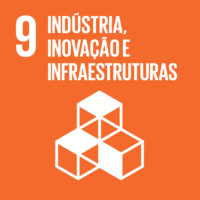Ciência_Iscte
Publicações
Descrição Detalhada da Publicação
MOOC on 'Ultra-dense Networks for 5G and its Evolution': Challenges and lessons learned
2022 31st Annual Conference of the European Association for Education in Electrical and Information Engineering (EAEEIE)
Ano (publicação definitiva)
2022
Língua
Inglês
País
Estados Unidos da América
Mais Informação
Web of Science®
Scopus
Google Scholar
Esta publicação não está indexada no Google Scholar
Esta publicação não está indexada no Overton
Abstract/Resumo
Many of the new mobile communication devices will be things that power and monitor our homes, city infrastructure and transport. Controlling drones thousands of miles away, performing remote surgeries or being immersed in video with no latency will also be a huge game changer. Those are some of the few things that make the fifth generation (5G) a revolution expected to be a thrust to the economy. To that end, the design and density of deployment of new networks is also changing becoming more dense, what introduces new challenges into play. What else will it add to previous generations? The MOOC about Ultra-dense networks for 5G and its evolution has been prepared by the researchers of an European MSCA ITN, named TeamUp5G, and introduces the most important technologies that support 5G mobile communications, with an emphasis on increasing capacity and reducing power. The content spans from aspects of communication technologies to use cases, prototyping and the future ahead, not forgetting issues like interference management, energy efficiency or spectrum management. The aim of the MOOC is to fill the gap in graduation and post-graduation learning on content related to emerging 5G technologies and its applications, including the future 6G. The target audience involves engineers, researchers, practitioners and students. This paper describes the content and the learning outcomes of the MOOC, the main tasks and resources involved in its creation, the joint contributions from the academic and non-academic sector, and aspects like copyright compliance, quality assurance, testing and details on communication and enrollment, followed by the discussion of the lessons learned.
Agradecimentos/Acknowledgements
--
Palavras-chave
Small cells,Energy efficiency,Spectrum and interference management,HetNets,IoT,Massive MIMO,Cell-free,mmWave,VLC,Prototyping,UAV,AR/VR,MOOC
Classificação Fields of Science and Technology
- Ciências da Computação e da Informação - Ciências Naturais
- Engenharia Eletrotécnica, Eletrónica e Informática - Engenharia e Tecnologia
Registos de financiamentos
| Referência de financiamento | Entidade Financiadora |
|---|---|
| 813391 | Comissão Europeia |
Contribuições para os Objetivos do Desenvolvimento Sustentável das Nações Unidas
Com o objetivo de aumentar a investigação direcionada para o cumprimento dos Objetivos do Desenvolvimento Sustentável para 2030 das Nações Unidas, é disponibilizada no Ciência_Iscte a possibilidade de associação, quando aplicável, dos artigos científicos aos Objetivos do Desenvolvimento Sustentável. Estes são os Objetivos do Desenvolvimento Sustentável identificados pelo(s) autor(es) para esta publicação. Para uma informação detalhada dos Objetivos do Desenvolvimento Sustentável, clique aqui.

 English
English



